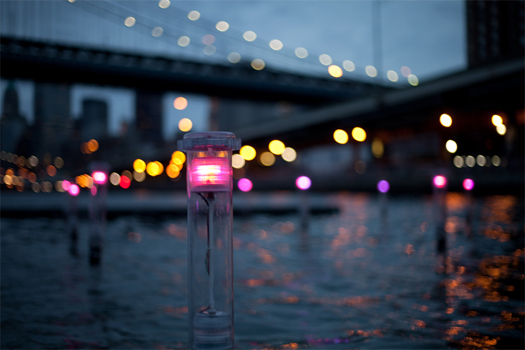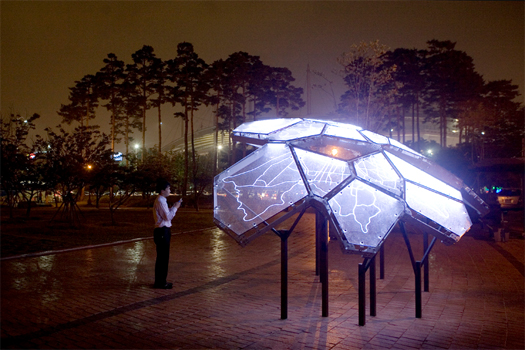

[A pair of projects by David Benjamin and Soo-in Yang (The Living); top, Amphibious Architecture; above, Living Light.]
The thirtieth anniversary issue of Metropolis has a number of great articles in it (and I hope to write at length shortly about one of those, Andres Duany’s apology for the New Urbanism), so I’d recommend picking up the entire issue, but, if you’re not inclined to do so, you ought to at least read Andrew Blum’s short piece on architecture, social media, and physical space:
“Our experience of the world around us has changed to a degree not seen since the arrival of trains and cars. The presence of “the Net”—by which I loosely mean all two-way, personal media—has become as much a factor in our experience of space as the play of light and shadow on a wall, or the cultural accretions that dignify local architectural styles…
…what if our screens engaged in that conversation? If our building facades didn’t just communicate information to us (à la the Jumbotron), but we communicated back, communally? After all, what makes cities vital are their color and diversity, the wild mix of scales, even the noise and confusion. This has been the defining sensation of modernity, from the Parisian boulevard to the contemporary aerotropolis. Social media has the potential to amplify this quality, making people feel disoriented and overwhelmed—but also focused and inspired. Great cities have always done both, and architecture’s role has always been to help make sense of it all. It took Mies to show how the lowly industrial I-beam could be transmuted into something as grand and symbolically profound as the columns of a Greek temple. What architect will turn the networked screen into a chapel?”
Read the full article at Metropolis.

